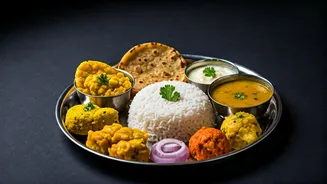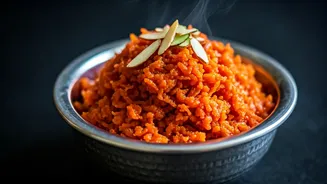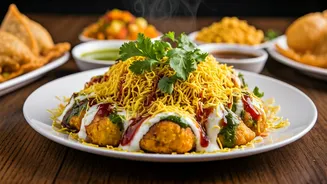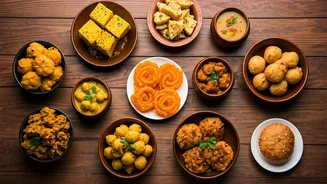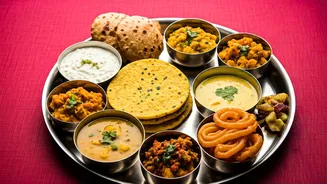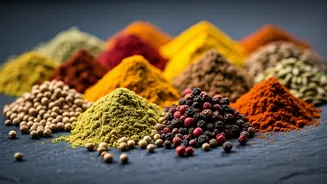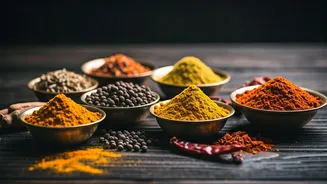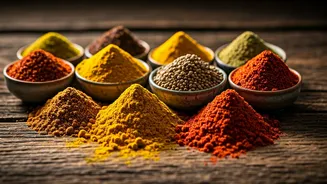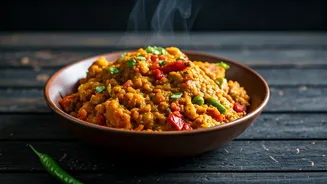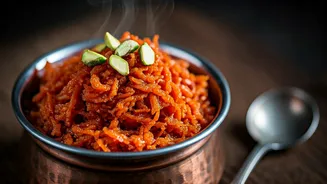Introduction to Gujarati Cuisine
Gujarati food is characterized by its distinct blend of sweet, sour, and spicy flavors. This balance is achieved through the artful use of various spices,
jaggery, tamarind, and chilies. The cuisine often incorporates a vegetarian focus, reflecting the strong influence of the Jain community. Many Gujarati dishes are inherently vegetarian, with variations like farsan (snacks) and subzis (vegetable preparations) playing a key role. The cooking style often involves slow simmering and steaming techniques. Gujarati cuisine is not only about the food itself but also about the culture and values. Sharing meals with family and guests is a key part of Gujarati culture, and mealtimes are opportunities to strengthen bonds. Each dish reflects a specific region or tradition, adding depth to the culinary heritage. Understanding the origins of the food helps to develop a deep appreciation for the unique flavors.
Dhokla: The Steamed Delight
Dhokla is a steamed snack made from fermented batter, typically a mix of rice and chickpeas. The fermentation process gives the dhokla a light, fluffy texture and a slightly tangy taste. There are many variations, including the khatta dhokla, which gets its tanginess from yogurt, and the rava dhokla, made with semolina. Dhokla is often garnished with mustard seeds, green chilies, and coriander leaves, offering a burst of flavors. It can be served with chutneys, like mint-coriander chutney or tamarind chutney, to enhance the taste. Dhokla is a versatile snack that can be eaten at any time of the day and is popular throughout India. The preparation of dhokla involves several steps, from soaking the ingredients to fermenting the batter and finally steaming it to perfection. Mastering the art of making dhokla is a testament to the appreciation for this classic snack.
Thepla: A Flatbread Staple
Thepla is a flavorful flatbread made from wheat flour, spices, and fenugreek leaves (methi). It's a staple in Gujarati households, often prepared for breakfast or as a travel food because of its long shelf life. The methi gives the thepla a slightly bitter, distinctive taste that is balanced by the spices. The dough is typically flavored with spices like turmeric, cumin, and coriander. Theplas are usually cooked on a griddle with a touch of oil, giving them a soft yet slightly crispy texture. They can be enjoyed with yogurt, pickles, or a variety of chutneys. Thepla is not just food; it is a cultural symbol, reflecting the resourcefulness and adaptability of Gujarati cuisine. Making thepla involves several steps, from kneading the dough to rolling out the flatbread and cooking it until golden brown. The thepla's simple preparation and versatility make it a favorite across generations, easily adapted to different tastes and preferences.
Undhiyu: A Winter Specialty
Undhiyu is a mixed vegetable dish, traditionally cooked upside down in earthen pots (matlu), and is a seasonal delight, particularly enjoyed during winter. The name 'undhiyu' comes from the Gujarati word 'undhu', meaning upside down, referring to the unique cooking method. The vegetables are typically marinated in a mixture of spices and herbs. The pot is then sealed and placed over a fire or buried underground to cook the vegetables slowly. The slow cooking process allows the flavors to meld together, creating a unique and complex taste. Undhiyu is usually served with puri and shrikhand, providing a complete and satisfying meal. The dish represents the communal spirit, often prepared in large quantities during festivals and celebrations. Making undhiyu involves various steps, from preparing the vegetables to layering them with spices and cooking them slowly. The seasonal aspect of undhiyu shows the close connection between Gujarati cuisine and the agricultural seasons.
Khandvi: The Rolled Delight
Khandvi is a savory snack made from a mixture of gram flour (besan) and buttermilk. The batter is cooked to a thick consistency and then spread thinly on a surface to cool. Once cooled, the sheets are rolled into bite-sized spirals, giving them a unique appearance. The khandvi is seasoned with a tempering of mustard seeds, sesame seeds, and curry leaves, adding flavor and aroma. It's often garnished with freshly chopped coriander and grated coconut. Khandvi is known for its delicate texture and light taste. It is an easy snack that can be made quickly, making it a popular choice for parties and gatherings. The creation of khandvi showcases the artistic aspect of Gujarati cooking, requiring precision and care in its preparation. The meticulous rolling of khandvi is a sign of culinary excellence. Khandvi is a dish that reflects both skill and creativity.
Handvo: The Savory Cake
Handvo is a baked or pan-fried vegetable cake that combines lentils, rice, and various vegetables. The mixture is fermented to develop a slightly tangy flavor, similar to dhokla. Vegetables like bottle gourd, carrots, and spinach are often added for both taste and nutrition. The handvo is spiced with ginger, green chilies, and other aromatic spices. It is often topped with a tempering of mustard seeds and sesame seeds. Handvo can be enjoyed as a snack or a light meal. Baking or pan-frying the handvo gives it a crispy exterior and a soft interior, making it a textural delight. It is a hearty dish that is both nutritious and satisfying. The creation of handvo highlights the creativity and adaptability of Gujarati cooking. Making handvo requires a blend of culinary art and technical skills.
Dal Dhokli: A One-Pot Meal
Dal Dhokli is a wholesome one-pot meal that combines lentil soup (dal) with wheat flour dumplings (dhokli). The dhokli are small, diamond-shaped pieces of dough that are cooked in the dal, absorbing the flavors of the spices and lentils. The dal is typically made with toor dal (split pigeon peas), seasoned with turmeric, asafoetida, and other spices. The dish offers a rich, comforting experience. The dhokli becomes soft and tender as it cooks, complementing the texture of the dal. Dal Dhokli is a popular comfort food and is often enjoyed during cooler months. It represents the ability of Gujarati cuisine to create complete, balanced meals. The preparation of Dal Dhokli involves several steps, from preparing the dal to making the dhokli and cooking them together. The entire process of making this meal is a testament to the Gujarati culinary heritage.
Khaman: The Soft & Spongy
Khaman is a steamed snack similar to dhokla, but it has a slightly different preparation and texture. It is made from a batter of gram flour (besan) and is typically seasoned with ginger, green chilies, and other spices. The batter is fermented, giving it a soft and spongy texture. Khaman is often steamed in small molds or pans. The steam enhances the softness and airiness of the snack. Khaman is garnished with mustard seeds, coriander leaves, and sometimes sev (crispy noodles). It is often served with a variety of chutneys. Khaman is a light and refreshing snack that can be enjoyed any time of the day. The cooking process is designed to create a light, spongy texture that makes it a popular dish. The preparation of khaman is a good showcase for the mastery of Gujarati cooking techniques.
Shrikhand: The Sweet Treat
Shrikhand is a sweet dessert made from strained yogurt, traditionally hung overnight to remove the whey, resulting in a thick, creamy consistency. The yogurt is then sweetened with sugar or jaggery. It is flavored with cardamom, saffron, and nuts such as almonds or pistachios, offering a rich and aromatic taste. Shrikhand is served chilled and is often enjoyed during festivals and special occasions. The creamy texture and delightful flavors make it a favorite for many. It is the perfect end to a Gujarati meal. Making shrikhand involves a simple yet meticulous process of straining the yogurt, sweetening it, and adding flavorings. The result is a dessert that is refreshing and satisfying. Shrikhand's unique preparation adds a touch of sweetness to the Gujarati cuisine.
